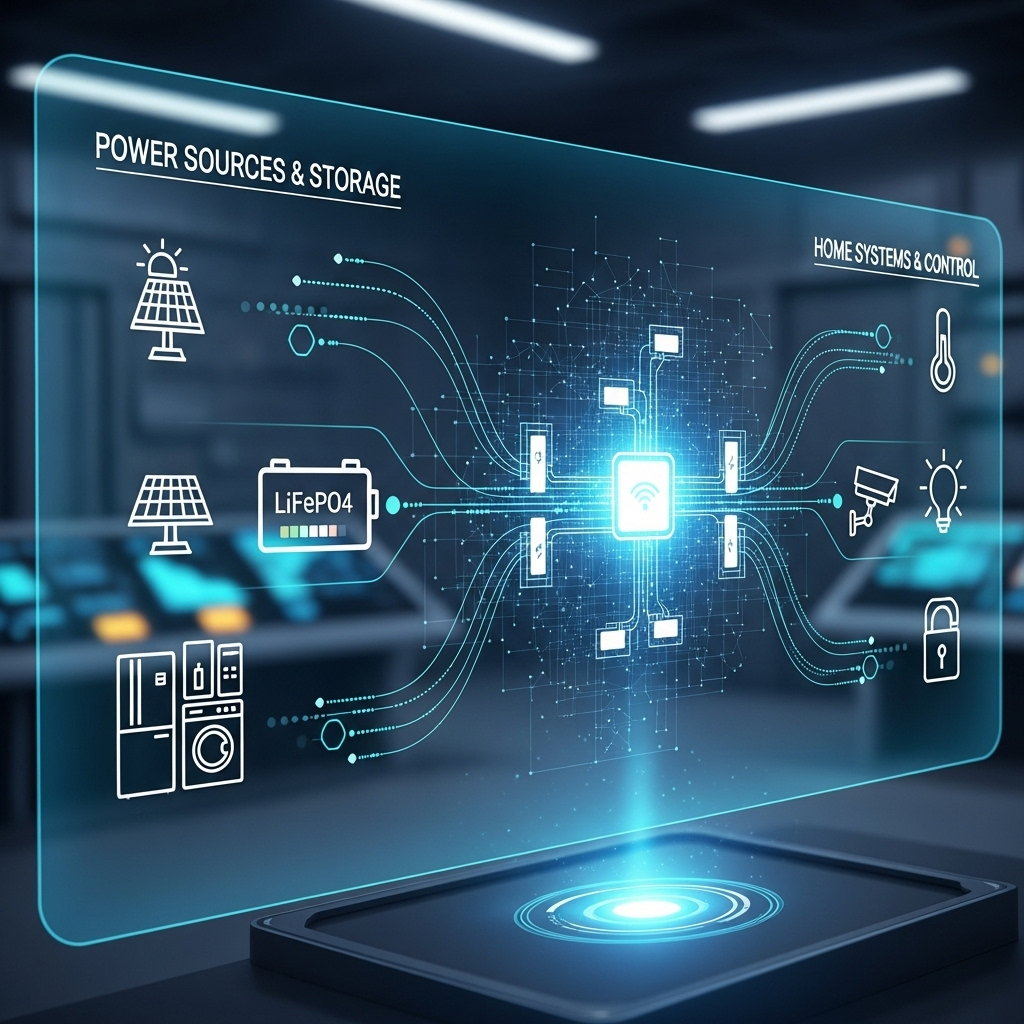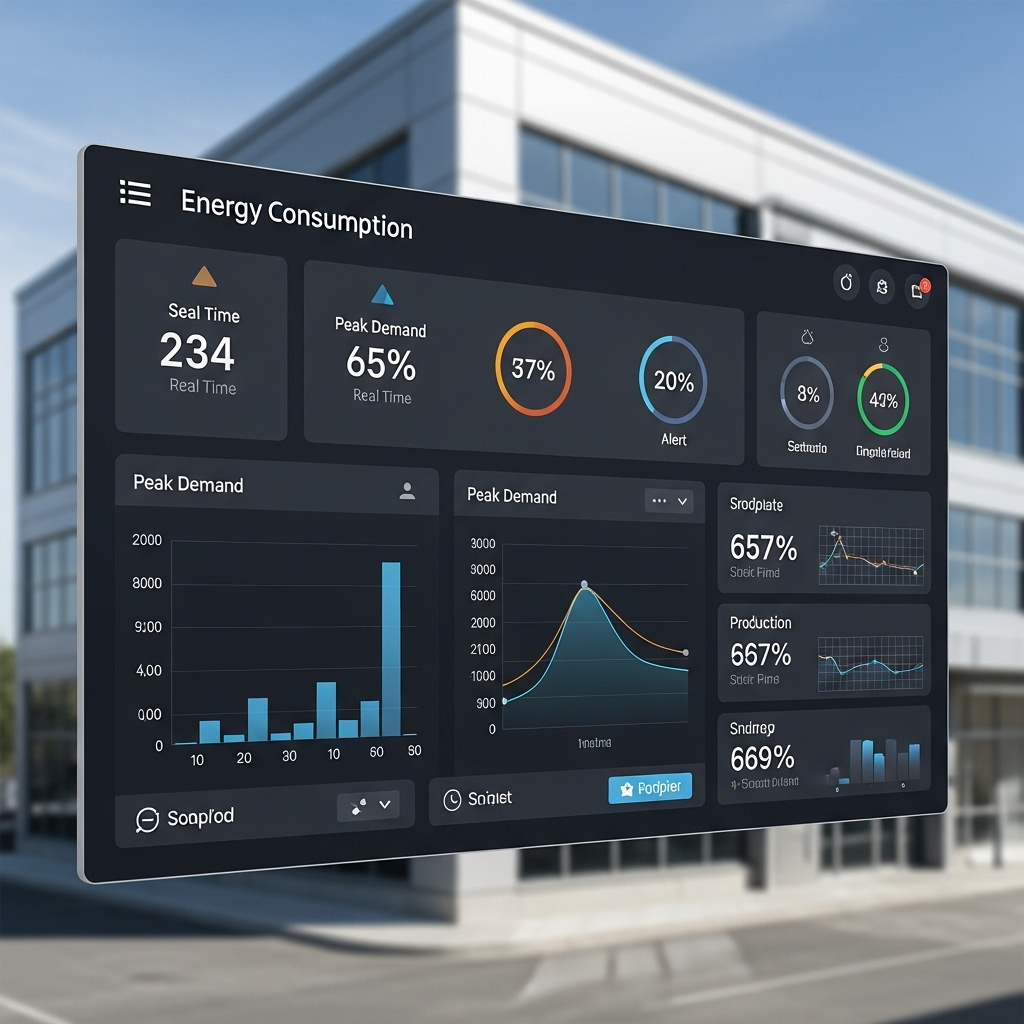Integrating solar and energy storage systems (ESS) into the broader energy grid is no longer a future concept; it is happening now. A critical part of this integration is communication. For your assets to participate in grid services like demand response (DR), they need to speak the same language as the utility. OpenADR 2.0b is a widely adopted standard that makes this conversation possible. This article explains how to translate your system's operational data, or telemetry, into the standardized signals required by OpenADR 2.0b, enabling your assets to become active grid participants.
Understanding the Core Components: Telemetry and OpenADR
Before mapping data, you must first understand the two sides of the equation: the data your system produces (telemetry) and the language it needs to speak (OpenADR). These two elements are the foundation of automated grid interaction.
What is Solar and ESS Telemetry?
Telemetry is the real-time data stream generated by your solar and storage equipment. It provides a live snapshot of your system's status and performance. This data is fundamental for monitoring, control, and, most importantly, for communicating your system's capabilities to the grid operator. Key telemetry points include:
- State of Charge (SoC): The current energy level of your battery, usually expressed as a percentage.
- Power (kW): The rate at which your system is generating or discharging electricity at any given moment.
- Energy (kWh): The total amount of energy stored or delivered over a period.
- Voltage and Frequency: Electrical characteristics that indicate the quality and stability of the power.
- Grid Status: Information on whether the system is connected to the grid, islanded, or in a fault state.
Accurate telemetry is the source of truth for your system's ability to respond to a grid request.
A Primer on OpenADR 2.0b
Open Automated Demand Response (OpenADR) is a secure, open-source communication standard. It automates communication between a utility or grid operator and electricity users. In this model, the utility's control system is the Virtual Top Node (VTN), and the customer's participating asset (like your ESS) is the Virtual End Node (VEN).
The standard defines several key interactions, but two are central to this process:
- eiReport: The VEN sends reports to the VTN, providing updates on its status. This is where your telemetry data goes.
- eiEvent: The VTN sends event signals to the VEN, requesting a specific action, such as reducing consumption or discharging the battery.
This standardized dialogue allows for rapid, automated responses to changing grid conditions, which is essential for modern energy management.
The Mapping Process: From Raw Data to Actionable Signals
Mapping involves translating your system's native telemetry into the structured format of OpenADR reports and programming your system to react to OpenADR events. This process turns raw data into valuable, grid-responsive actions.
Step 1: Identifying and Structuring Key Telemetry Data
The first step is to identify which data points from your solar and ESS are relevant for OpenADR reporting. You must know what the utility needs to see to trust your system as a reliable grid resource. The following table shows common telemetry points and their relevance in a DR context.
| Telemetry Data Point | Typical Unit | Relevance for OpenADR |
|---|---|---|
| State of Charge (SoC) | Percent (%) | Indicates available energy capacity for discharge events. |
| Real Power (AC) | Kilowatts (kW) | Shows current charge/discharge rate; confirms response to an event. |
| Available Energy | Kilowatt-hours (kWh) | Reports how much energy the ESS can deliver. |
| Operational State | Enum (e.g., Charging, Discharging, Idle) | Communicates the current functional status of the asset. |
| Grid Frequency | Hertz (Hz) | Used for advanced grid services like frequency regulation. |
Step 2: Translating Telemetry into OpenADR Reports (eiReport)
Once you have identified your key data, you must package it into `eiReport` messages. The VEN sends these reports to the VTN periodically or upon request. An `eiReport` contains one or more `ReportSpecifier` sections, which define the data being sent.
For example, to report your battery's State of Charge, you would map your system's SoC telemetry to an OpenADR report with a `ReadingType` of 'x-chargeState'. Your VEN's software would read the battery's SoC (e.g., 85%) and construct an XML payload that identifies this value as the current charge state. This tells the VTN precisely how much energy your system has in reserve. Similarly, the current power output would be mapped to a `ReadingType` like 'powerReal'.
Step 3: Interpreting OpenADR Events (eiEvent) and Taking Action
The real value is unlocked when your system can respond to `eiEvent` signals from the VTN. An event signal contains instructions for what the VEN should do. A common signal type is `SIMPLE`, which can have levels like `normal`, `moderate`, or `high`.
Here is a practical scenario:
- The VTN sends an `eiEvent` with a `high` signal level, indicating a critical need for grid support. The event specifies a 1-hour duration.
- Your VEN receives and parses this event.
- The VEN's internal logic maps this `high` signal to a pre-defined action: 'Discharge battery at maximum rated power'.
- The VEN sends a command to the ESS inverter to begin discharging at, for instance, 5 kW.
- Simultaneously, the VEN sends an `eiReport` back to the VTN confirming it has started discharging at 5 kW, providing real-time feedback.
This closed-loop communication ensures that actions are requested, executed, and verified automatically.
Practical Implementation and Best Practices
Successfully mapping telemetry to OpenADR requires more than just understanding the protocol. It demands robust implementation and adherence to best practices to ensure reliability and performance.
Building a Compliant Virtual End Node (VEN)
A VEN is the software and/or hardware that implements the client-side of the OpenADR protocol. You can either purchase a certified, off-the-shelf VEN solution or develop a custom one. A custom VEN offers more flexibility but requires deep expertise in both the OpenADR standard and your specific hardware's control interfaces (e.g., Modbus, CAN, or proprietary APIs). Security is paramount; OpenADR 2.0b mandates transport layer security (TLS) to protect communications between the VEN and VTN.
Ensuring Data Accuracy and Reliability
The principle of 'garbage in, garbage out' applies here. If your telemetry data is inaccurate, your OpenADR reports will be misleading, and your system's response may not meet the grid's needs. This can lead to poor performance reviews in DR programs. To ensure your reports are accurate, you must first have a solid grasp of your system's capabilities. A comprehensive understanding of solar and storage performance metrics is the foundation for reliable data mapping. Regular calibration and maintenance of your monitoring equipment are also crucial.
The Broader Impact: Why This Matters
Mapping telemetry to OpenADR is a technical task with significant financial and environmental implications. According to a report by the International Energy Agency (IEA), digitalization and smart grid technologies are critical for integrating variable renewables like solar and wind.
By enabling your assets to participate in DR programs, you transform them from simple cost-saving devices into revenue-generating resources. Utilities pay for reliable capacity and grid services, creating new income streams for asset owners. On a larger scale, a network of responsive distributed energy resources (DERs) forms a virtual power plant (VPP). As noted in publications like Next Generation Wind and Solar Power, this level of flexibility is essential for maintaining grid stability as more renewable energy sources come online. Your system becomes a small but vital part of a more resilient, efficient, and clean energy grid.
Final Thoughts on Data Integration
Mapping solar and ESS telemetry to OpenADR 2.0b signals is the bridge between your private energy asset and the public electricity grid. It is a meticulous process that requires a clear understanding of your system's data, the OpenADR protocol, and robust control logic. By successfully implementing this data standardization, you not only unlock the full financial potential of your solar and storage investment but also contribute to a more stable and sustainable energy future for everyone.
Disclaimer: This article is for informational purposes only and does not constitute professional engineering or financial advice. Consult with a qualified professional before implementing any grid-interactive systems.
Frequently Asked Questions
What is the difference between a VTN and a VEN?
A VTN (Virtual Top Node) is the server, typically operated by a utility or grid operator, that sends out demand response signals. A VEN (Virtual End Node) is the client, which is the system at the customer's site (like an ESS controller) that receives the signals and manages the asset's response.
Is OpenADR 2.0b the only standard for demand response?
While OpenADR 2.0b is a leading international standard for automated demand response, other protocols and proprietary systems also exist. However, OpenADR's open-source, non-proprietary nature has led to its wide adoption by utilities and manufacturers, promoting interoperability.
Can I use OpenADR for my home solar and battery system?
Yes, if your system's hardware and software support it. Many modern home energy storage systems are being designed with OpenADR-compliant VENs built-in or available as an add-on. You also need a utility or aggregator in your area that runs a DR program using the OpenADR standard.
What are the security risks with OpenADR?
Like any networked system, security is a concern. The OpenADR 2.0b standard addresses this by requiring high-level security features, including TLS encryption for communication and certificate-based authentication to ensure that only authorized VTNs and VENs can communicate with each other. This prevents unauthorized control of energy assets.





Leave a comment
All comments are moderated before being published.
This site is protected by hCaptcha and the hCaptcha Privacy Policy and Terms of Service apply.